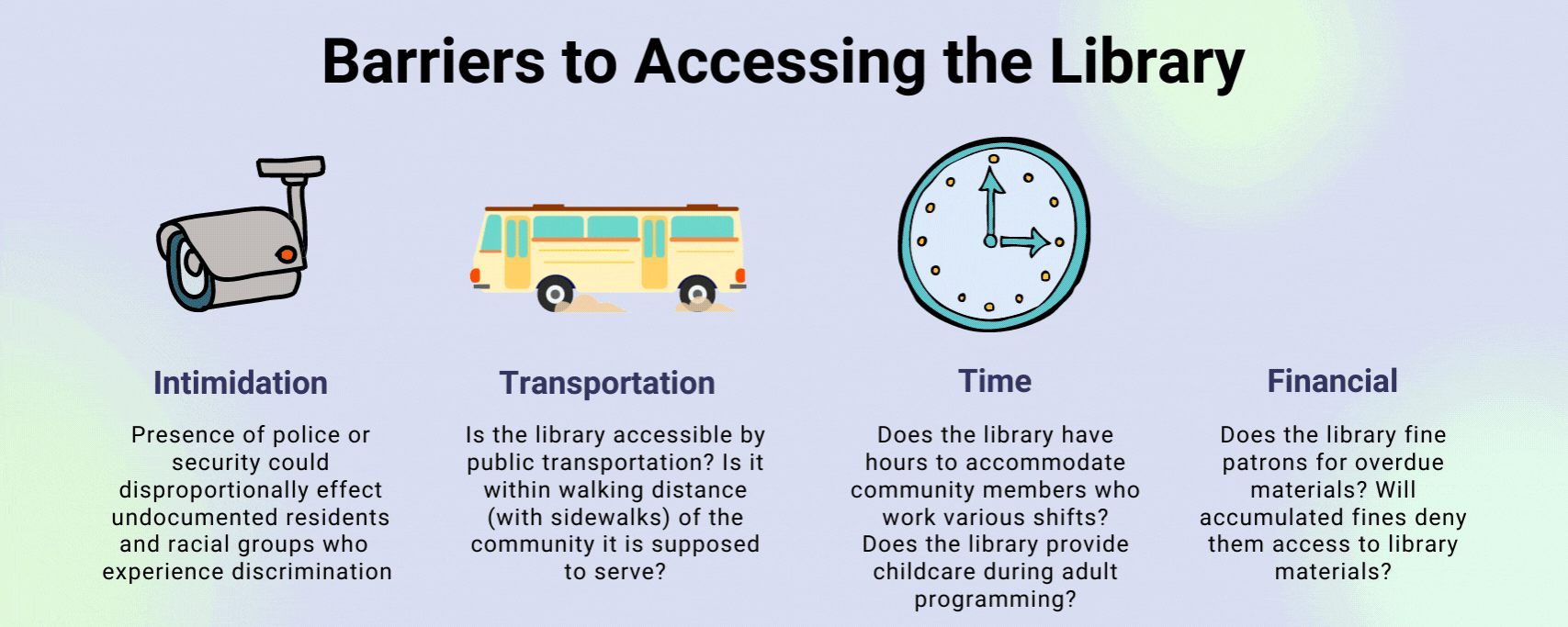Who’s Missing?
To some extent, who we are affects where we live, where we go to school, and our health – all things that impact our information seeking behaviors. People with disabilities are no different. Disabled people of color, poor disabled people, and disabled immigrants frequently face different issues than white, middle class disabled people. Issues specific to these groups are often not widely known because people in these groups are often not in positions of leadership in the well-known disability organizations that often speak “on behalf of” disability communities.
Without intentional, structured, and consistent mechanisms for assessing these needs, libraries exclude whole segments of local communities from libraries and are none the wiser. As a result, one-size-fits-all (or “universal”) design of library services will not truly meeting the needs of users – even if you’re planning with disabled community members in mind.
For example, disabled people who do not speak English as their first language often avoid the library due to combinations of ableism (disability discrimination), language barriers, and xenophobia/racism. Below, Karen Diaz explains how her experiences with library security guards (as the Spanish-speaking mother of an autistic child) led her to avoid the library. Rather than risk conflicts with police or library staff, more vulnerable community member often avoid the time and/or risk involved in making official complaints if library services do not meet their needs. Instead, they leave and do not return to the library.
Multiply marginalized communities might also have concerns about excessive data collection, requirements to provide home addresses or phone numbers to sign up for events, financial costs for participation in library programs and events, transportation concerns, or fear of police and security presence. These groups also experience disproportionate amounts of violence by police and security guards , and increased incidence of sexual abuse. Sensitivity to these sorts of issues can help ensure that multiply marginalized people with disabilities feel safe and welcome at the library.
Where to Start
Explicitly evaluate the impacts of library policies on segments of the community. Examining collection-development policies, behavioral policies, borrowing policies, and program participation policies, can prevent libraries from excluding community members who fall outside of norms established by “universal” or “identity- or need- blind*” approaches to librarianship.
*Though terms ending with “-blind” are commonplace, this type of language is considered ableist because it associates blindness with negative concepts or ideas. In this module, we use these terms as they commonly occur to convey concepts, but seek to provide alternative terms for ableist language throughout this toolkit.
Adapted from Beyond Sensory Story Time: An Intersectional Analysis of Information Seeking Among Parents of Autistic Individuals (Gibson & Hanson-Baldauf, 2019)
Pause for Reflection
Check out the following hashtags and curate a list of issues of importance to different disability communities:
#DisabilityTooWhite – Twitter Search / Twitter
#DisabilitySolidarity – Twitter Search / Twitter
#CripLib – Twitter Search / Twitter
Think about 3 library policies: one about behavior, one about the physical space, and one program policy.
- How might these impact disabled people differently from nondisabled people?
- How might they impact a library user with a disability who was experiencing homelessness? Who did not speak English? A disabled library user who is also a person of color?
- How might those services be overlook the needs of disabled or otherwise marginalized members of the community?
- What groups of people in your city/county are underrepresented in the library? Choose one group and think critically about why they may not patronize the library?
- What are some changes your library could make to break down barriers of access for member of yours community?


